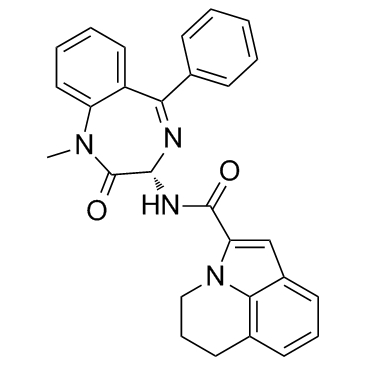Cholecystokinin Receptor
Cholecystokinin (CCK) is a neuropeptide that affects growth rate in chickens by regulating appetite. CCK peptides exert their function by binding to two identified receptors, CCKAR and CCKBR in the GI tract and the brain, respectively, as well as in other organs. In mammals, CCK/CCKAR interactions affect a number of immunological parameters, including regulation of lymphocytes and functioning of monocytes.
CCK, also known as pancreozymin, is synthesized and secreted by enteroendocrine cells in the duodenum. The main function of CCK is to cause the release of digestive enzymes and bile from the pancreas and gallbladder, respectively. It also induces drug tolerance to opioids like morphine and heroin. Cholecystokinin (CCK) has strong bioactivity in the regulation of a number of cell activities.
Targets for Cholecystokinin Receptor
Products for Cholecystokinin Receptor
- Cat.No. Nom du produit Informations
-
GC31558
CCK-A receptor inhibitor 1
L'inhibiteur 1 des récepteurs CCK-A est un inhibiteur des récepteurs de la cholécystokinine A (CCK-A) avec une IC50 binging de 340 nM.
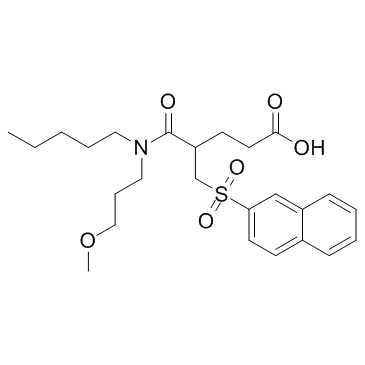
-
GC30752
CCK-B Receptor Antagonist 1
L'antagoniste du récepteur CCK-B 1 est un antagoniste du récepteur de la cholécystokinine B (CCK-B) et a le potentiel de réduire la sécrétion d'acide gastrique.
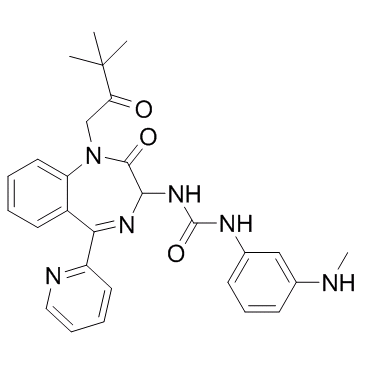
-
GC38746
CCK-B Receptor Antagonist 2
L'antagoniste 2 du récepteur CCK-B, composé 15b, est un antagoniste de la gastrine/CCK-B puissant et actif par voie orale avec une valeur IC50 de 0,43 nM.
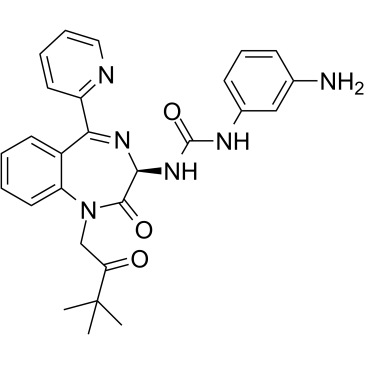
-
GC30008
Ceruletide (Caerulein)
Céruléotide (Caerulein) est un décapeptide et un agoniste puissant des récepteurs de la cholécystokinine.
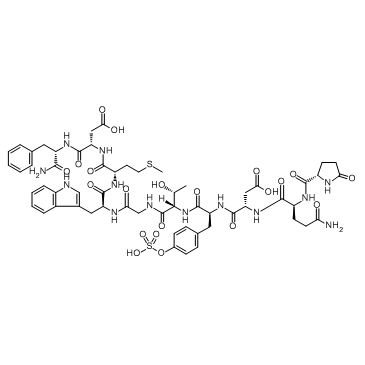
-
GC30674
CHEMBL333994 (FK-480)
CHEMBL333994 (FK-480) est un antagoniste de la cholécystokinine A (CCK-A) puissant et efficace par voie orale, avec une IC50 de 0,67 nM.
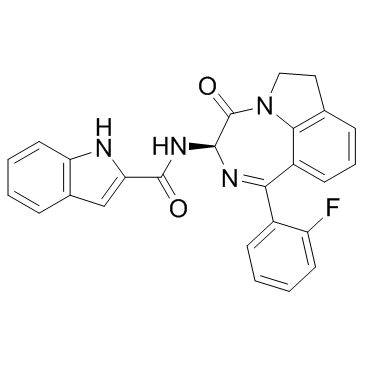
-
GC18139
Devazepide
Antagoniste du récepteur CCK1 (CCK-A), actif par voie orale.
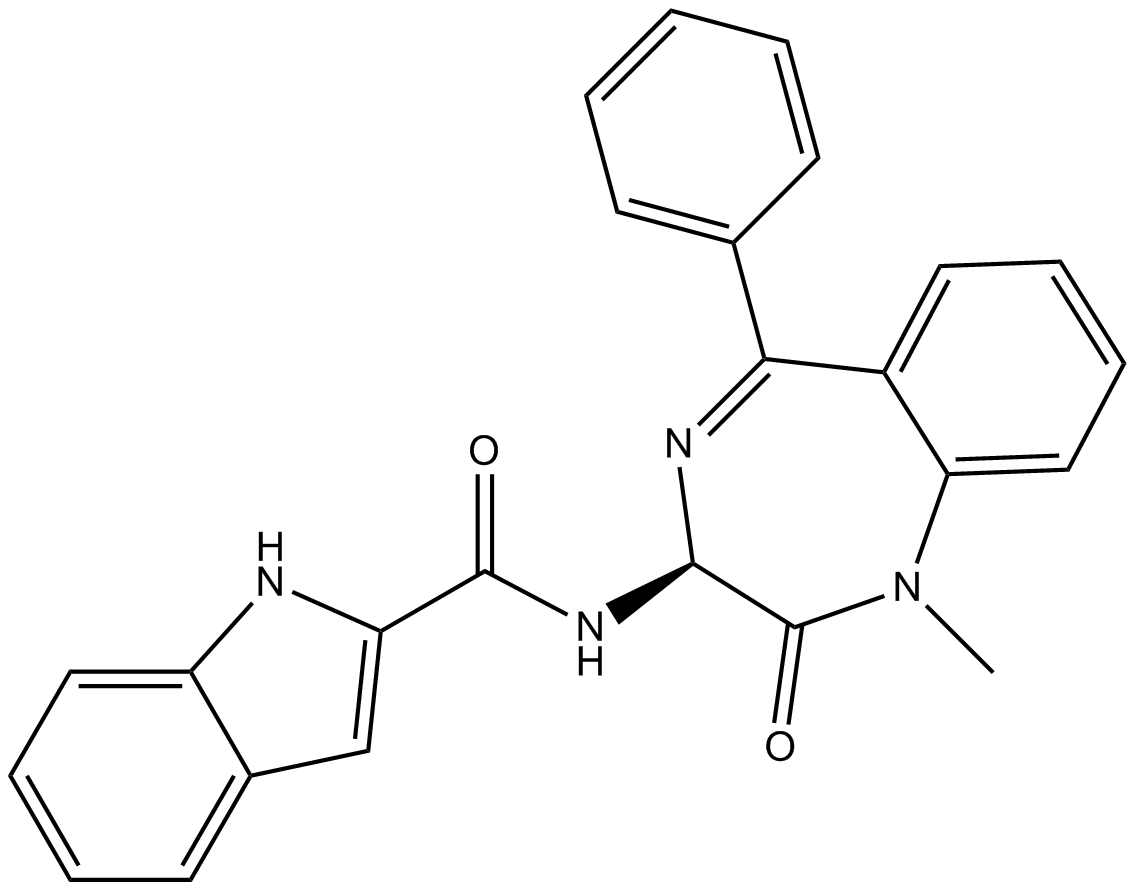
-
GC35846
Dexloxiglumide
Le dexloxiglumide est un antagoniste sélectif des récepteurs de la cholécystokinine de type A (CCKA).
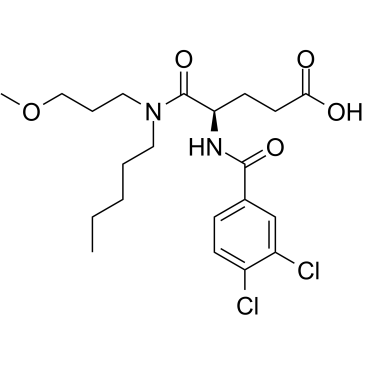
-
GC15133
Gastrin I (human)
Agoniste sélectif des récepteurs CCK2
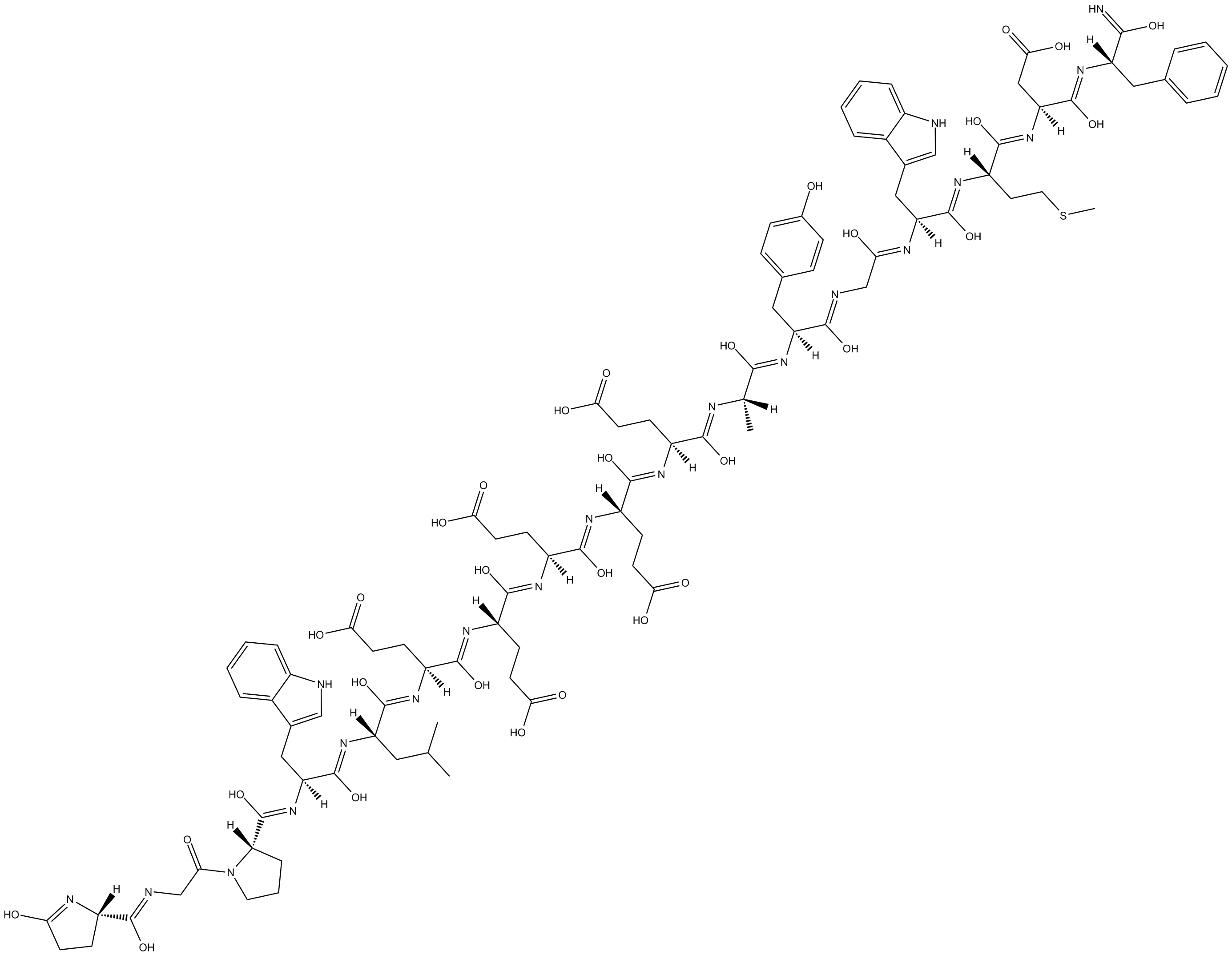
-
GA21898
Gastrin I (rat)

-
GC30680
Gastrin/CCK antagonist 1
L'antagoniste de la gastrine/CCK 1 est un antagoniste de la gastrine/CCK, utilisé pour la recherche des troubles gastro-intestinaux.
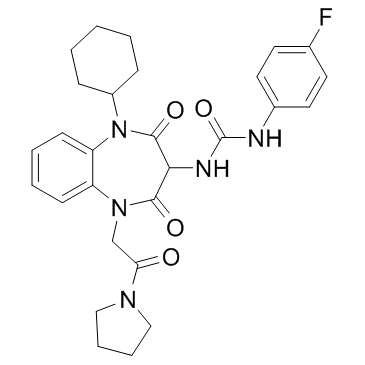
-
GC31592
GI 181771
GI 181771 est un agoniste des récepteurs de la cholécystokinine 1 étudié pour le traitement de l'obésité.
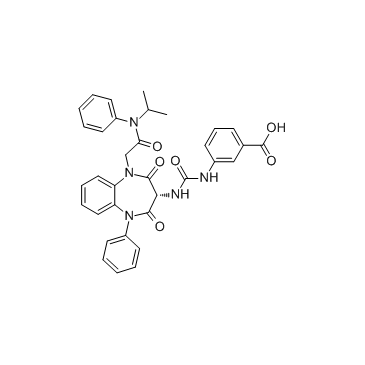
-
GC10360
Lorglumide (sodium salt)
Le lorglumide (sel de sodium) (sel de sodium CR-1409) est un puissant antagoniste des récepteurs de la cholécystokinine (CCK).
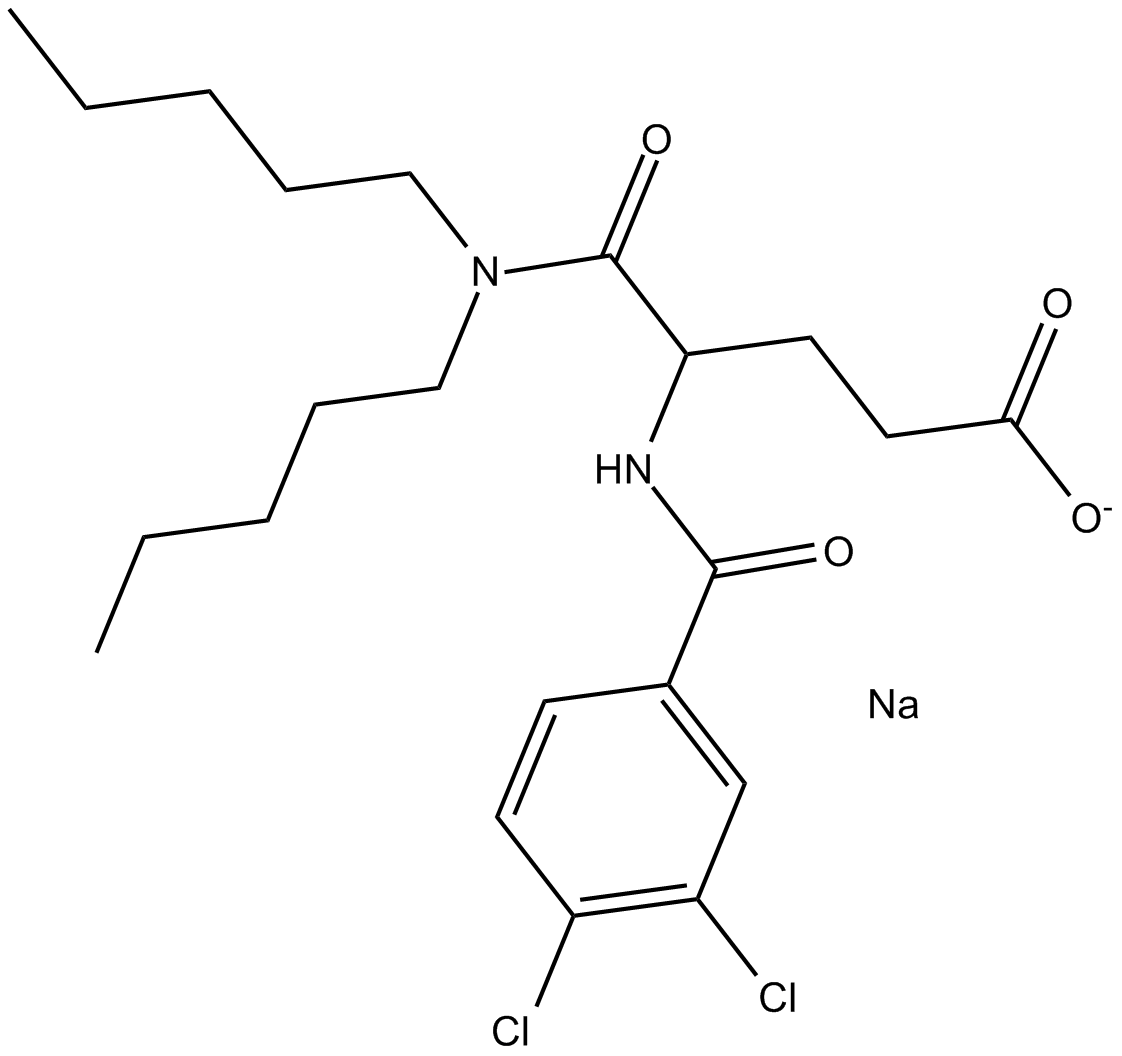
-
GC31382
Loxiglumide (CR-1505)
Le loxiglumide (CR-1505) est un antagoniste des récepteurs de la cholécystokinine (CCK-1).
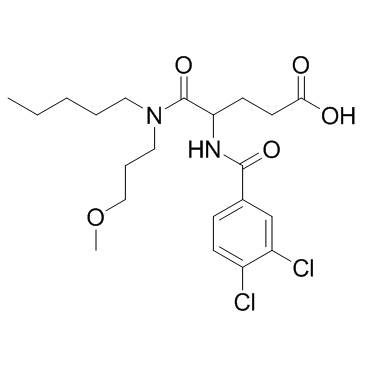
-
GC36610
Mini Gastrin I, human
Mini Gastrine I, humaine est une version plus courte de la gastrine humaine, se compose des acides aminés 5 À 17 du peptide parent.
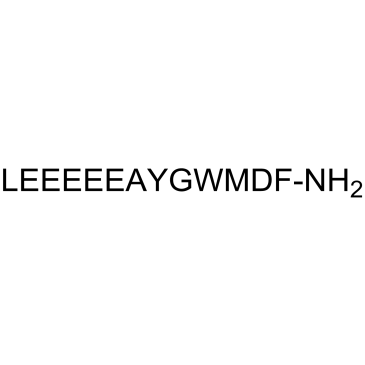
-
GC36611
Mini Gastrin I, human TFA
Mini Gastrine I, humaine (TFA) est une version plus courte de la gastrine humaine, constituée des acides aminés 5 À 17 du peptide parent.
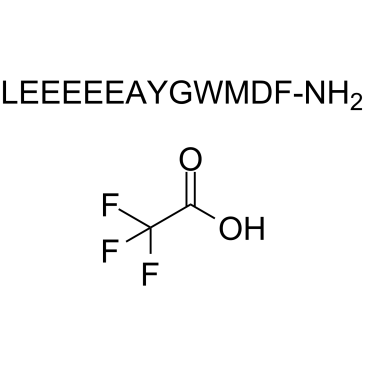
-
GC19258
Nastorazepide
Le nastorazépide (Z-360) est un antagoniste sélectif des récepteurs de la gastrine/cholécystokinine 2 (CCK-2) dérivé des 1,5-benzodiazépines, disponible par voie orale, avec une activité antinéoplasique potentielle.

-
GC32776
Pentagastrin (ICI-50123)
La pentagastrine (ICI-50123) (ICI-50123) est un puissant antagoniste sélectif des récepteurs de la cholécystokinine B (CCKB) avec des valeurs IC50 de 11 nM et 1100 nM pour CCKB et CCKA, respectivement.
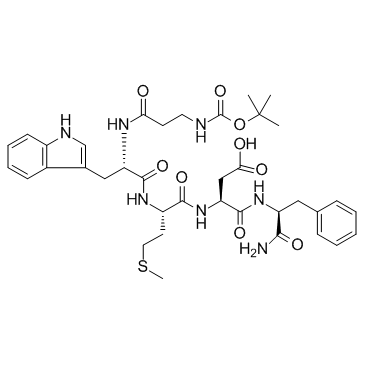
-
GC36976
Proglumide
Le proglumide est un antagoniste non peptidique et actif par voie orale des récepteurs de la cholécystokinine (CCK)-A/B.
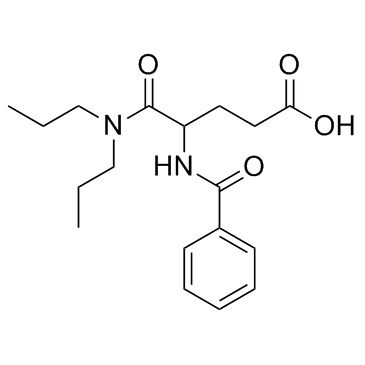
-
GC11012
Proglumide sodium salt
Le sel de sodium de proglumide est un antagoniste non peptidique et actif par voie orale des récepteurs de la cholécystokinine (CCK)-A/B.
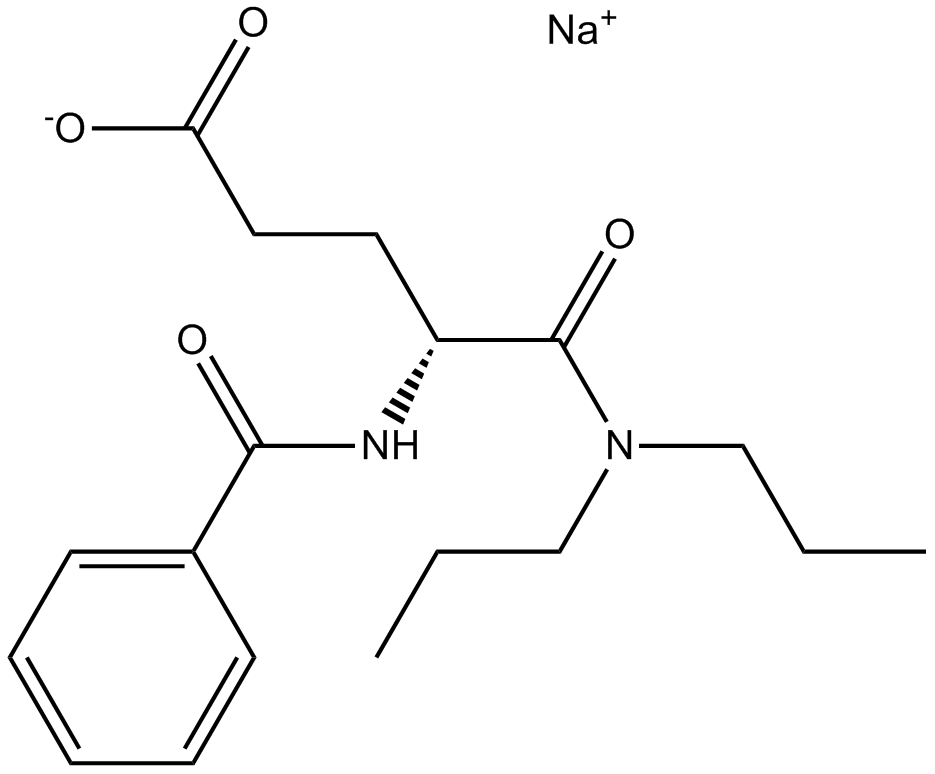
-
GC31407
Sograzepide (Netazepide)
Le sograzépide (Netazepide) (Netazepide ; YF 476 ; YM-220) est un antagoniste de la gastrine/CCK-B extrêmement puissant, hautement sélectif et actif par voie orale avec une valeur IC50 de 0,1 nM, a un effet inhibiteur sur l'activité de la gastrine/CCK-A avec une IC50 de 502 nM.
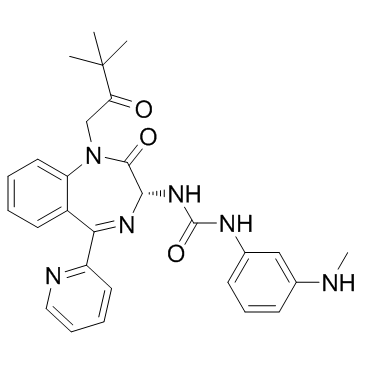
-
GC31613
SR 146131
Le SR 146131 est un agoniste puissant, disponible par voie orale et sélectif des récepteurs non peptidiques (cholécystokinine 1).
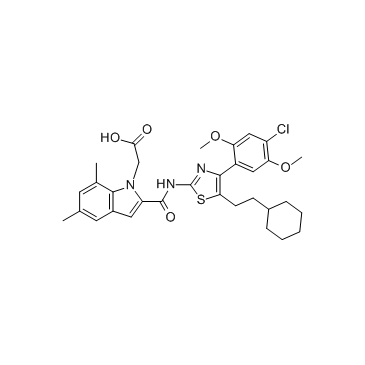
-
GC14258
SR 27897
SR 27897 (SR 27897) est un antagoniste des récepteurs de la cholécystokinine (CCK1) très puissant, sélectif, actif par voie orale, compétitif et non peptidique avec une EC50 de 6 nM et un Ki de 0,2 nM.
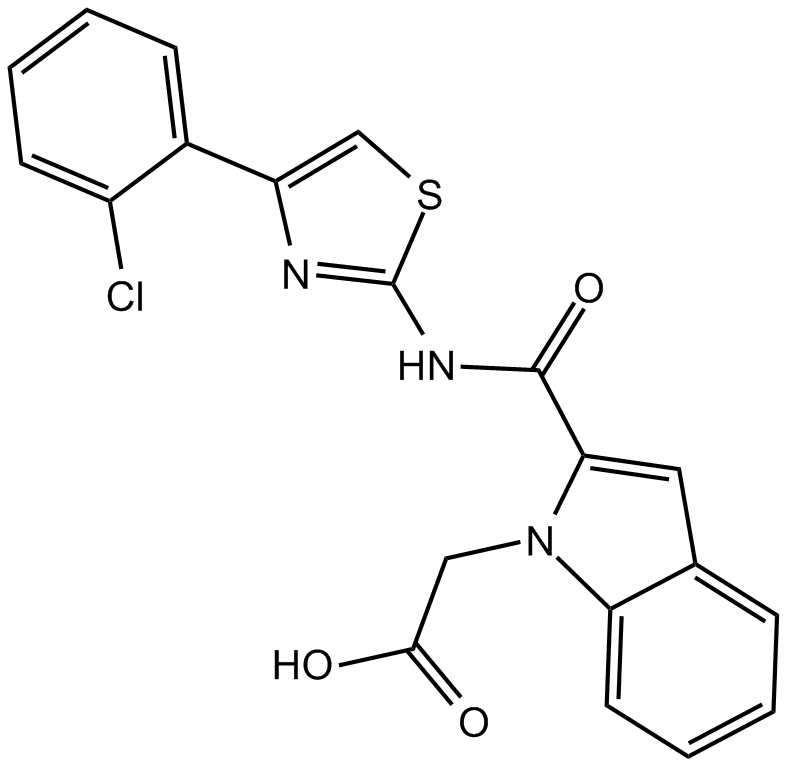
-
GC31477
Tarazepide
Le tarazépide est un antagoniste puissant et spécifique des récepteurs CCK-A.
